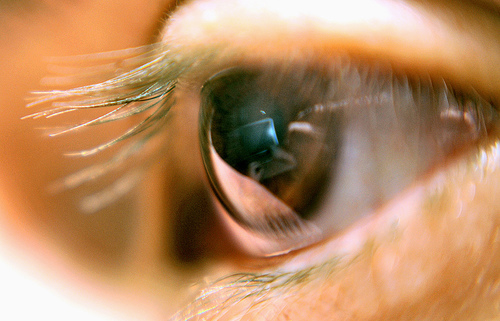Make sure that your time spent on the computer is not hurting your vision.
Growing up in this day and age, it is becoming more and more common to include technology into our daily life and activities. For some, this could include talking away on your cell phone or Bluetooth to different people across the country. For others, it could mean reading your paperback book off of an iPad or Kindle, rather than carrying around an actual hard copy.
However, one area in which technology really has taken over is the workplace. In thousands of offices and warehouses across America, many employees are utilizing computers to fill their daily orders, keep in touch with their clients, and even run a potentially global operation all from behind their computer desk.
Unfortunately, while computers and the internet may be a huge step forward for the productivity and expansion of our workplace, with so many people using computers at work, computer eye strain has become a major job-related complaint within the last century. In fact, computer vision syndrome (or CVS) may impact as many as 70% of those who work on their computers for at least two hours each day.
So, for those employees who are looking to keep their eyesight healthy, but are unable to ditch their computer, what is the proper solution? We have put together some simple steps that all technology enthusiasts can take in order to reduce their risk of computer eye strain and other common symptoms of computer vision syndrome (CVS).
1. Visit Your Eye Doctor
Before you make any adjustments to your daily technology routine, you should first have a comprehensive eye examination with your eye doctor to ensure that your vision is fit for the task at hand. If not, getting prescription lenses or undergoing LASIK eye surgery may be just what you need in order to keep your eyes focused and clear on the screen ahead.
2. Minimize Glare
One of the biggest causes of eye strain in the workplace is improper lighting. Glare on walls, as well as the reflections on your computer screen can caught computer eye strain. Therefore, keep bright overhead lighting to a minimum and position your desk lap away from you and aimed at your desk. Also, if you are unable to change the lighting around you, consider installing an anti-glare screen on your monitor that will keep reflections at bay.
3. Take Frequent Breaks
When it comes to our vision and technology, it is best to follow the common 20/20/20 rule When spending a lot of time in front of a digital device, be sure to spend 20 seconds looking at something 20 feet away, every 20 minutes. A recent NIOSH study reported that discomfort and eye strain were significantly reduced when computer workers took these “mini-breaks” throughout the day.
4. Remember To Blink
As silly as it may sound, when looking at a computer or digital device for too long, it can often become common for you to blink. In fact, during these times, it is actually more accurate that people blink two to three times less than your normally would. This can quickly lead to dry eye. Therefore, always be sure to take blinking breaks throughout the day. Using an artificial tear drop while working on the computer may further relieve symptoms.
Image: Source
